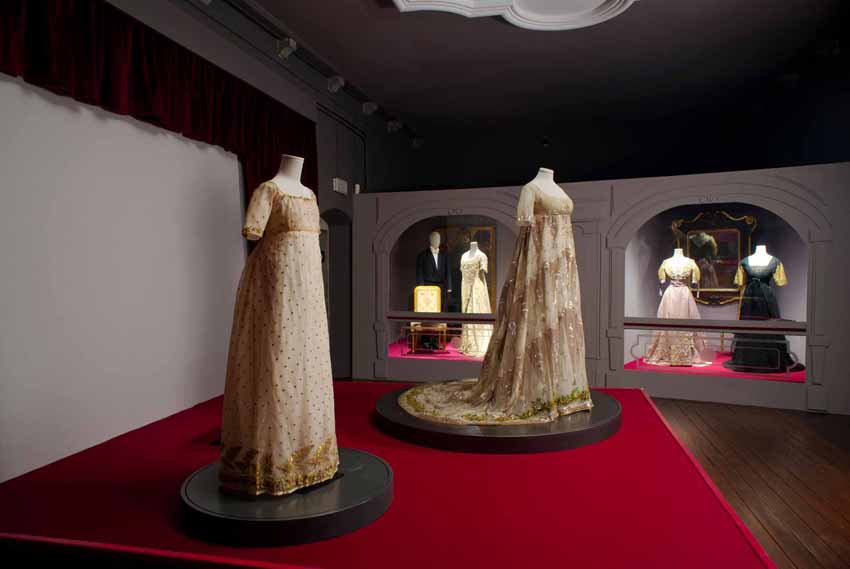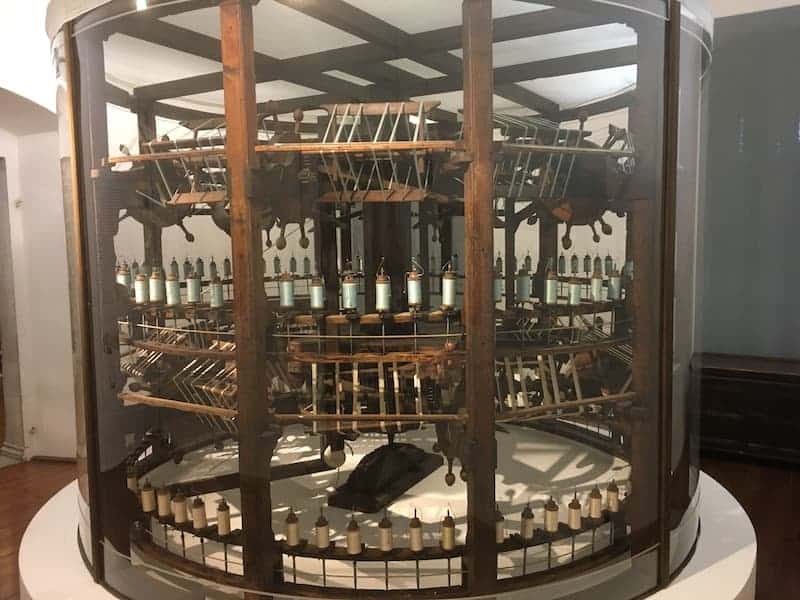Museum of Fashion and Applied Arts

The Museum of Fashion and Applied Arts occupies the first floor of the Dornberg and Tasso Houses, incorporating the already present sections of the production and processing of silk and that of jewels.

It gives ample space to the numerous and rich collections of applied arts owned by the Provincial Museums since their origins and increased both by the incessant research of Giovanni Cossar, in the first decades of the century, and by more recent purchases and donations.
The itinerary winds through environments alluding to artisan activities connected to clothing, such as those of the shoemaker and the hatter who modeled important clothing accessories on their wooden forms.
Rich is the part dedicated to the lively artisanal production of glass and ceramics of the Gorizia area. They are not very large collections, however they are varied and are interesting for understanding the tastes and cultural references of these lands. Nearly 400 objects are on display, both locally produced and from the Veneto, Austria, Bohemia and England.

The ceramic production of the Gorizia area is testified by artifacts from the two factories that were built in Gorizia at the end of the 18th century, while the glass comes from the factories that arose during the 18th century in the woods of Tarnova.
In the showcases that recall the ancient pharmacies, alembics, twists, vials for the preparation and conservation of medicinal substances are displayed, as well as albarelli and other typical containers dating back to the eighteenth and nineteenth centuries.

Nineteenth-century wrought iron produced in Gorizia is also on display: lunettes, overdoors, railings and gates that highlight a sober and calm style.
Lace, which boasts a prestigious tradition in the Gorizia area, dates back to 1672 when two Ursuline mothers from Liège introduced the art of bobbin lace to the city. The Flemish influence would have remained a characteristic feature for a long time, intertwining with suggestions from Eastern Europe, as documented by samples and borders.
The clothing collections of the Provincial Museums span a period of time between the 1700s and 1900s, but the best represented period is the one that goes from 1890 to the First World War. The items on display illustrate the various types of clothing in use throughout the day and on some particular occasions.

You can admire morning, business and evening dresses from the early 20th century. The high quality tailoring items on display are an excellent document of sophisticated Central European elegance. The section dedicated to travel, holidays and sports includes, among others, a travel raincoat and a motorcyclist's outfit from the early 1900s.
Among the clothing accessories, selections of gloves and handbags from the 18th century to 1925 stand out.
The last room, intended to host rotating events, opens with the reconstruction of a key place of feminine elegance: the tailoring, a distant reflection of the glittering Parisian or Viennese fashion salons.
Video: Museum of Fashion and Applied Arts
Map: Museum of Fashion and Applied Arts
Address: Case Dornberg e Tasso, Borgo Castello, 13
Gorizia (GO) Friuli Venezia Giulia
Latitude: 45.94304812854185
Longitude: 13.627874851226807
Site: http://www.gomuseums.net/custo...
vCard created by: Paola Bonometti
Currently owned by: Paola Bonometti
Type: Building
Function: Museum
Creation date:
Last update: 30/11/2022